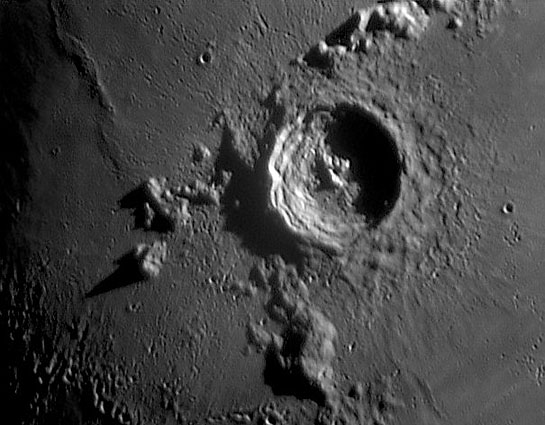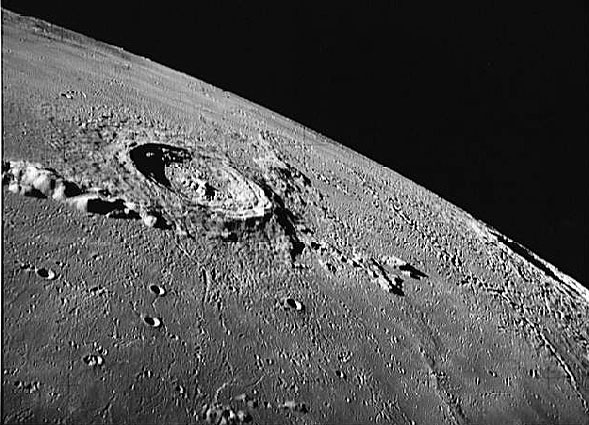Difference between revisions of "June 26, 2004"
| (9 intermediate revisions by the same user not shown) | |||
| Line 1: | Line 1: | ||
__NOTOC__ | __NOTOC__ | ||
=An Older Copernicus= | =An Older Copernicus= | ||
| + | <!-- Start of content --> | ||
<table width="640" border="0" align="center" cellpadding="6" cellspacing="2"> | <table width="640" border="0" align="center" cellpadding="6" cellspacing="2"> | ||
<tr> | <tr> | ||
| Line 8: | Line 9: | ||
<tr> | <tr> | ||
<td colspan="2"><div align="center"> | <td colspan="2"><div align="center"> | ||
| − | + | {{HoverImage|LPOD-2004-06-26.jpeg|LPOD-2004-06-26b.jpeg}} | |
| − | |||
</div></td> | </div></td> | ||
</tr> | </tr> | ||
| Line 15: | Line 15: | ||
<table width="100%" border="0" cellpadding="8"> | <table width="100%" border="0" cellpadding="8"> | ||
<tr> | <tr> | ||
| − | <td><div align="center | + | <td><div align="center"><p>Image Credit: [mailto:Craig@astroimaging.com Craig Zerbe]</p></div></td> |
</tr> | </tr> | ||
</table> | </table> | ||
| Line 21: | Line 21: | ||
<table class="story" border="0" bgcolor="#FFFFFF" width="90%" cellpadding="10" align="center"><tr><td> | <table class="story" border="0" bgcolor="#FFFFFF" width="90%" cellpadding="10" align="center"><tr><td> | ||
<p class="story" align="center"><b>An Older Copernicus</b></p> | <p class="story" align="center"><b>An Older Copernicus</b></p> | ||
| − | <p class="story" align="left">Copernicus is the exemplar of a large complex crater. There are a few dozen other relatively fresh Copernicus-like craters on the lunar nearside - and a significant, but often overlooked one lurks just a few hundred kilometers to the east. Eratosthenes is a junior Copernicus - 58 km diameter vs 93 km - and is somewhat older. As Craig's excellent image details, Eratosthenes has wonderfully preserved terraces and massive central peaks, and an extensive array of secondary craters that have excavated radial crater chains into Mare Imbrium lavas. If you look at this area near full Moon you will see that Eratosthenes disappears, while Copernicus is very bright, and a Copernicus ray crosses Eratosthenes. Also, look carefully at full, and see if you can detect the short remaining ray from Eratosthenes that extends to the north. Copernicus is clearly younger than Eratsothenes, and that crater, obviously, is older than the nearby maria and the Apennine Mountain spur the crater excavated into. Mouseover for another excellent view, this one from Apollo 17 (AS17-145-22285), looking south, and just catching a profile of Copernicus on the top left. | + | <p class="story" align="left">Copernicus is the exemplar of a large complex crater. There are a few dozen other relatively fresh Copernicus-like craters on the lunar nearside - and a significant, but often overlooked one lurks just a few hundred kilometers to the east. Eratosthenes is a junior Copernicus - 58 km diameter vs 93 km - and is somewhat older. As Craig's excellent image details, Eratosthenes has wonderfully preserved terraces and massive central peaks, and an extensive array of secondary craters that have excavated radial crater chains into Mare Imbrium lavas. If you look at this area near full Moon you will see that Eratosthenes disappears, while Copernicus is very bright, and a Copernicus ray crosses Eratosthenes. Also, look carefully at full, and see if you can detect the short remaining ray from Eratosthenes that extends to the north. Copernicus is clearly younger than Eratsothenes, and that crater, obviously, is older than the nearby maria and the Apennine Mountain spur the crater excavated into. Mouseover for another excellent view, this one from Apollo 17 (AS17-145-22285), looking south, and just catching a profile of Copernicus on the top left.</p> |
| − | <p class="story" align="right">— [mailto:tychocrater@yahoo.com Chuck Wood] | + | <p class="story" align="right">— [mailto:tychocrater@yahoo.com Chuck Wood] </p> |
| − | </p> | ||
<p class="story" align="left"><b>Technical Details:</b><br> | <p class="story" align="left"><b>Technical Details:</b><br> | ||
Celestron 11 inch SCT mounted on a Losmandy G11, using an Astrovid 2000 camera. The image results from stacking 200 semi-frames.</p> | Celestron 11 inch SCT mounted on a Losmandy G11, using an Astrovid 2000 camera. The image results from stacking 200 semi-frames.</p> | ||
| Line 29: | Line 28: | ||
[http://www.astroimaging.com/photo.htm Craig's Lunar Images] | [http://www.astroimaging.com/photo.htm Craig's Lunar Images] | ||
</p> | </p> | ||
| − | <p | + | <p><b>Yesterday's LPOD:</b> [[June 25, 2004|Cassini Observed]] </p> |
| + | <p><b>Tomorrow's LPOD:</b> [[June 27, 2004|An Older Tycho]] </p> | ||
</tr> | </tr> | ||
</table> | </table> | ||
| + | </p> | ||
<p> | <p> | ||
<table width="100%" border="0" cellspacing="2" cellpadding="4"> | <table width="100%" border="0" cellspacing="2" cellpadding="4"> | ||
| Line 40: | Line 41: | ||
<td><p align="center" class="main_titles"><b>Author & Editor:</b><br> | <td><p align="center" class="main_titles"><b>Author & Editor:</b><br> | ||
[mailto:tychocrater@yahoo.com Charles A. Wood]</p> | [mailto:tychocrater@yahoo.com Charles A. Wood]</p> | ||
| − | < | + | <!-- Cleanup of credits --> |
| − | + | <!-- Cleanup of credits --> | |
| − | < | + | <!-- Cleanup of credits --> |
| − | + | <!-- Cleanup of credits --> | |
| − | < | + | <!-- Cleanup of credits --> |
| − | + | <!-- Cleanup of credits --> | |
| + | <!-- Cleanup of credits --> | ||
</tr> | </tr> | ||
</table> | </table> | ||
<!-- end cal --> | <!-- end cal --> | ||
<div align="center"></div> | <div align="center"></div> | ||
| + | </p> | ||
<p> </p> | <p> </p> | ||
| − | ---- | + | <!-- End of content --> |
| − | + | {{wiki/ArticleFooter}} | |
| − | |||
Latest revision as of 19:20, 7 February 2015
An Older Copernicus
Image Credit: Craig Zerbe |
|
An Older Copernicus Copernicus is the exemplar of a large complex crater. There are a few dozen other relatively fresh Copernicus-like craters on the lunar nearside - and a significant, but often overlooked one lurks just a few hundred kilometers to the east. Eratosthenes is a junior Copernicus - 58 km diameter vs 93 km - and is somewhat older. As Craig's excellent image details, Eratosthenes has wonderfully preserved terraces and massive central peaks, and an extensive array of secondary craters that have excavated radial crater chains into Mare Imbrium lavas. If you look at this area near full Moon you will see that Eratosthenes disappears, while Copernicus is very bright, and a Copernicus ray crosses Eratosthenes. Also, look carefully at full, and see if you can detect the short remaining ray from Eratosthenes that extends to the north. Copernicus is clearly younger than Eratsothenes, and that crater, obviously, is older than the nearby maria and the Apennine Mountain spur the crater excavated into. Mouseover for another excellent view, this one from Apollo 17 (AS17-145-22285), looking south, and just catching a profile of Copernicus on the top left. Technical Details: Related Links: Yesterday's LPOD: Cassini Observed Tomorrow's LPOD: An Older Tycho |
Author & Editor: |
COMMENTS?
Register, Log in, and join in the comments.





